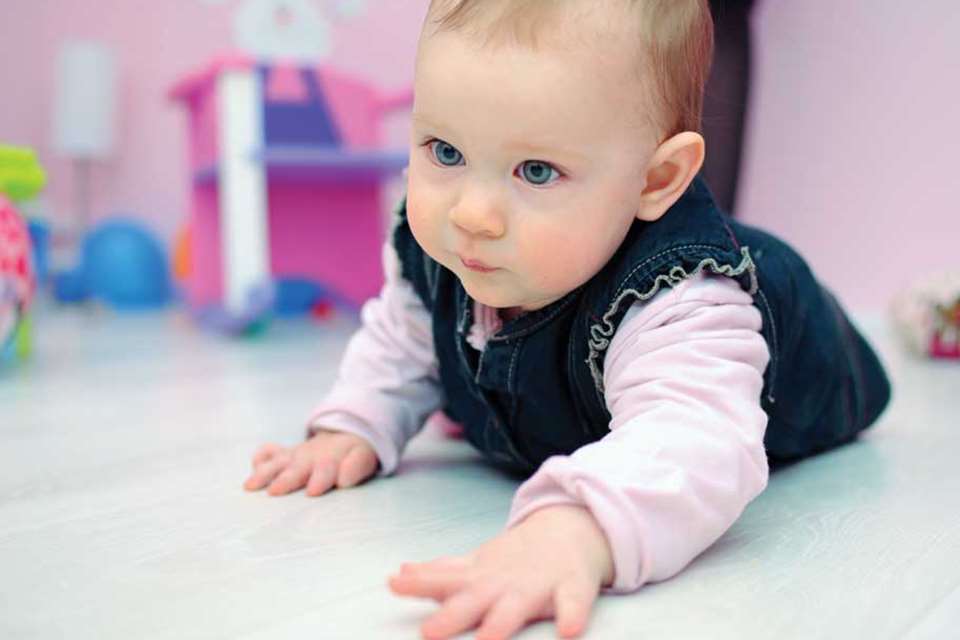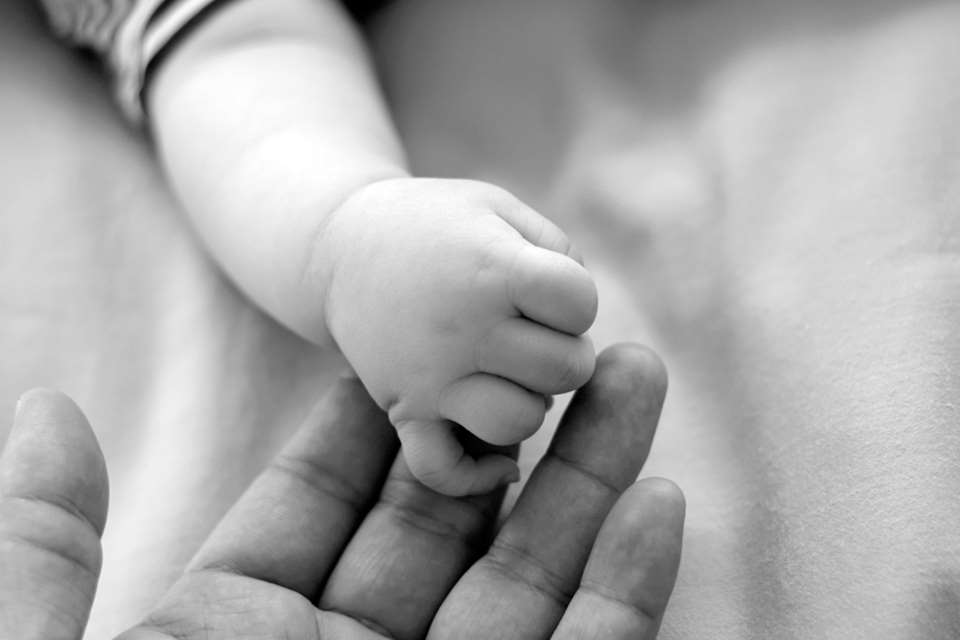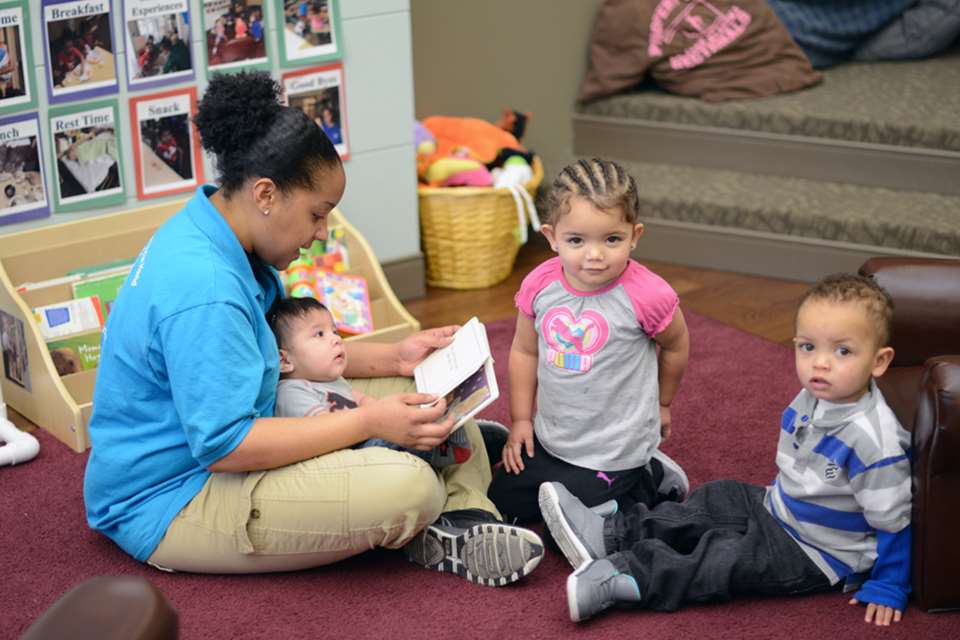Baby Rooms - Up close
Laura Piper and Verity Green
Monday, February 4, 2019
A Baby Room Project in East Sussex is improving interactions with children under 18 months, report Laura Piper and Verity Green

Download the PDF of this article
Baby room practitioners in East Sussex have been reflecting on their day-to-day interactions with the children in their care and researching how to improve their practice in early communication. The project, focusing on developing and understanding interactions with children aged under 18 months old, was inspired by the Baby Project conducted by Professors Kathy Goouch and Sacha Powell at Canterbury Christ Church University.
We wanted to encourage reflection and self-confidence among baby room practitioners and were delighted that Professor Goouch agreed to mentor us.
SELF-CONFIDENCE
Practitioners from 14 diverse settings across the county chose to take part in the first phase, which launched in November 2017 with a conference for the project leads from each setting and their managers. Professor Goouch inspired them by speaking about the importance of professionalism in baby rooms and that through the project they were joining research not just locally but nationally and internationally.
We discussed what we meant by an interaction – such as making eye contact, getting on the child’s level, waiting for cues from the child, using the child’s voice and singing – and talked about the project as a way to reflect on practice and compare it to research before making adjustments in their settings and evaluating the impact.
The project leads needed to be brave and critique their practice, which is why we included nursery managers to support them as they used research to formulate new ideas and explained to their team the changes that they wanted to make. A session on self-confidence and self-esteem also helped to boost the lead practitioners’ confidence.
Throughout the project, participants were supported in various ways, including evening network meetings. These gave practitioners the opportunity to tour other baby rooms and share ideas and their research while they were supported to reflect further on their research and observational findings. An email group enabled practitioners to share research and ask questions, and settings kept reflective journals.
We wanted the baby room practitioners to own the project and for each setting to develop a question to investigate. To help highlight specific areas that could be focused on, we observed interactions at each setting (between staff and children, baby to baby and staff to staff) and gave feedback on the positives, such as turn-taking, babbling and allowing babies the chance to respond, as well as missed interactions.
We then used a self-reflection questionnaire to help settings to focus on ways to interact more meaningfully with babies, including:
- through songs
- understanding individual children’s sounds and words
- working with parents to support communication
- sustained shared interactions
- understanding interactions between infants and their peers.
We encouraged participants to observe interactions and use a tally chart to clarify whether non-verbal communication was being picked up. Some settings filmed segments of the day to analyse later.
The self-reflection and observations helped practitioners to identify areas for improvement, such as doing more to support babies with English as an additional language, or singing more.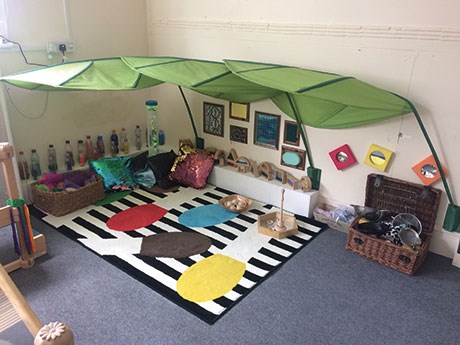
BUILDING POSITIVE RELATIONSHIPS
The settings came up with a range of research questions on areas such as:
- Supporting non-baby room practitioners to understand how to interact with babies during times together with older children or when other staff come into the baby room. At Bear’s House Nursery in St Leonards this has resulted in other staff building positive relationships with the babies. Babies now often go to the gate to greet other practitioners.
- Finding strategies to help staff interact with the babies; for example, personalising routines and trying to focus on the children rather than tasks. At Bunny Run Childcare in Hellingly they now split into smaller groups to enable more opportunities to interact. Staff find it helps them to focus more on individuals. At Clive Vale Nursery (Priory Road) in Hastings, staff have introduced baby signing and singing lullabies to connect with and calm children through the day, not just at sleep time.
- Looking at where quality interactions took place most and least. Strategies were then researched and implemented to encourage more interactions outside and during mealtimes.
- Improving interactions with parents and children during the settling-in process, such as finding out children’s specific gestures or key words in their home language.
- Using ‘motherese’ – infant-directed or baby talk.
One participant said, ‘Doing research has given the nursery a reason for making changes and a basis for justifying those changes to the company.’
Staff at Robertsbridge Children’s Services feel they have become more aware of good practice in interacting with babies, such as giving them time to think when asked a question and looking for non-verbal responses including gestures and facial expressions. Staff are aware of varying their tone when speaking or singing, and of the importance of getting on the babies’ level.
RESPECTFUL AND INDIVIDUALISED
When we returned to each setting at the end of the project’s first phase we saw an incredible increase in respectful and individualised interactions. Partnership with parents has also increased, with practitioners adopting the songs sung during nappy changes at home and asking parents about the meaning of baby’s different sounds.
Practitioner knowledge has increased and reflective practice is becoming embedded in the baby rooms. A bonus is that baby room practitioners feel less isolated now that they have shared their practice with the wider staff team.
At the end of the first phase, many participants were keen to learn more and continued to attend network meetings. The enthusiasm to learn has been astounding and the changes wonderful. Often the whole baby room ethos has changed.
Phase two is under way and there is already a waiting list for phase three, and we hope to involve childminders.
CASE STUDY: Twiglets Forest School in Newhaven, East Sussex
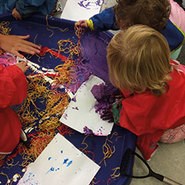 ‘My university studies made me realise how important research and critical thinking is. Getting involved in the Baby Room Project gave us the chance to work as a team and go on a learning journey together,’ says Fay Sandalls, manager of Twiglets (now Each Peach Forest School).
‘My university studies made me realise how important research and critical thinking is. Getting involved in the Baby Room Project gave us the chance to work as a team and go on a learning journey together,’ says Fay Sandalls, manager of Twiglets (now Each Peach Forest School).
‘Learning how to research properly is the most important aspect that our staff have taken away from the project. Our staff are now confident in finding relevant academic papers and skim reading them to identify useful areas. They enthusiastically conduct research in their own time and in non-contact time and then share their findings with the rest of the team informally or during “reflection time” in our staff meetings. This has greatly improved our self-confidence. We’re now not afraid to ask questions, reflect on our practice and think where to get further support or information.
‘Our baby room has up to 13 babies but is free-flow with the family room, so it was important for all the team to be involved in the project. Supported by observations, we decided that we wanted to research different types of communication in babies, with the aim of improving our interactions and picking up on previously missed cues, such as a baby’s glance or push of a toy signalling that they want to play. We also investigated brain development and early attachment because this has a big impact on early communication.
‘The changes have been astonishing with staff becoming more in tune with the babies, which we feel has led to the children being quicker to pick up language, interactions becoming more meaningful and staff identifying developmental challenges faster. Rather than crowding play, staff will observe, wait and listen in order to tune in to the child.
‘We have also introduced signing across the nursery and share it with parents through a “sign of the week” on our Facebook page. This has aided communication between adults and babies and their peers and led to more interaction and less frustration.
‘We’re sharing our research through handouts and a parents’ evening. It’s really brought us together as a team for the benefit of staff, children and families. We’re now focusing on inter-generational communication and relationships.’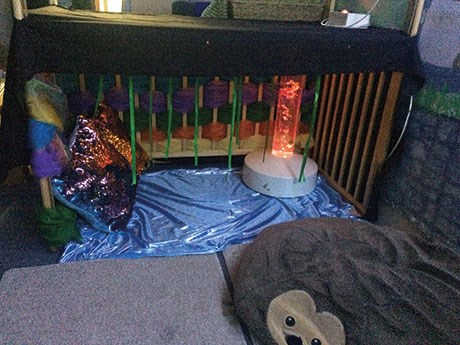
FURTHER READING
www.nurseryworld.co.uk/nursery-world/feature/1161672/eyfs-best-practice-all-about-baby-room-projects
www.nurseryworld.co.uk/nursery-world/feature/1152267/baby-rooms-still-room-for-improvement
For information on all elements of the Baby Room Project, including links to publications, presentations and details ofthe 10th International Baby Room conference in May 2019, visit: https://bit.ly/2skKzqF
Laura Piper and Verity Green are project leads on the East Sussex Baby Room research project and work for the East Sussex Early Years Improvement Team. They spoke to Annette Rawstrone.


